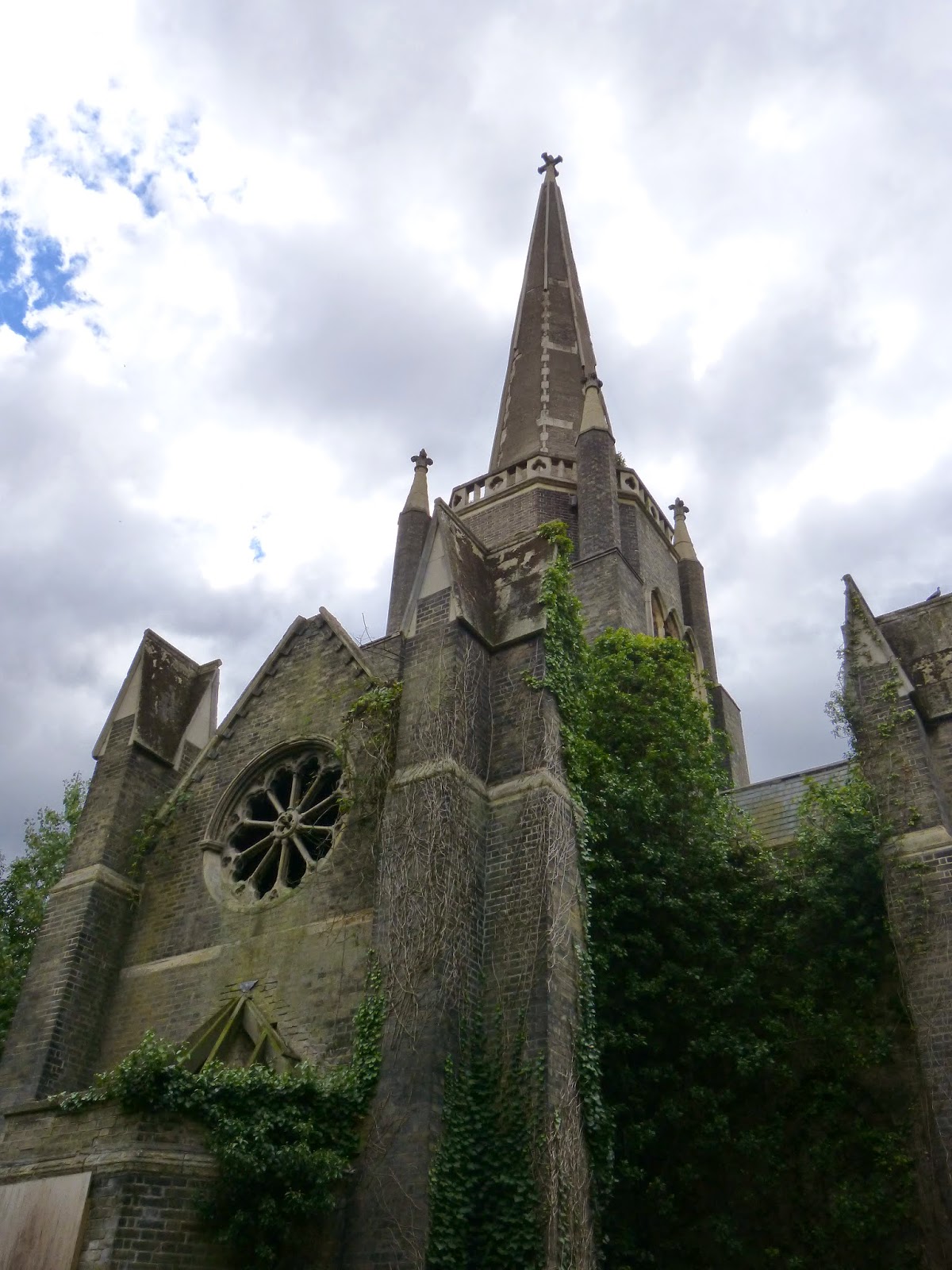Rather apt then that seven friends went to visit one of the Magnificent Seven Cemeteries built around the perimeter of London in the Nineteenth Century. We entered through the Egyptian style gates where the hieroglyphics on the lodge translate as 'The gates of the abode of the mortal parts of man', into a wonderful vista of quiet abandonment where nature, a trust group and the local population have adopted this huge site as their own. Where once the Nonconformist public were buried no matter their religion, today the public no matter their religion can walk, run, exercise their dogs, meet, laugh, talk, perform theatre including The Scottish Play and carve trees.
and nature takes its course .
Here we are, the seven of us [I am behind the camera] next to the grave of Frank Bostock [1866-1912] described as a Victorian menagarist.
Looking at his knuckles and nose it is apparent that this sleeping lion is a tactile attraction for many visitors.
This is a huge site and I cannot cover all the burials but for me the most memorable were an eclectic mix.
From the first grave and here is John from the Abney Park Trust in front of it.
Ellen Gray, who died in 1930 had a sculpture made of her head to become an angel above her own grave. Imposing from behind as well, she almost seems to fly through the air.
The paupers graves all stacked up together, may answer the question 'where are the poor buried? 'posed by David W. Bartlett in London Day and Night in 1852.
The answer being, together and many without memorial or grave of their own.
The memorial to those local civilians killed in London as a result of the blitz strikes on apartments in a nearby road, Coronation Avenue.
Tommy Hall [died 1949] the record breaking track and road cyclist.
To this memorial stone with a car.
The important General William and Catherine Booth, founders of the Salvation Army.
The decaying building in the middle of Abney Park is a fabulous Gothic chapel designed by William Hosking, designed purely for burial rites and not religious worship.
We sat and listened to stories of its interior alongside one of the volunteers.
Such an inspiring afternoon.
And here are a few of the angels, for every Victorian Cemetery needs a few angelic monuments and this wonderful rambling cemetery is no exception. Wherever you wander along the wooded pathways and look into the undergrowth and up into the trees you will find wonderful angels, symbols of hope from this very long century of death. All pointing their fingers to heaven above the graves bought in perpetuity.
I am reminded of those words by Emily Dickinson
Because I could not stop for Death -
He kindly stopped for me -
The Carriage held but just Ourselves -
And Immortality.
Links:






















No comments:
Post a Comment